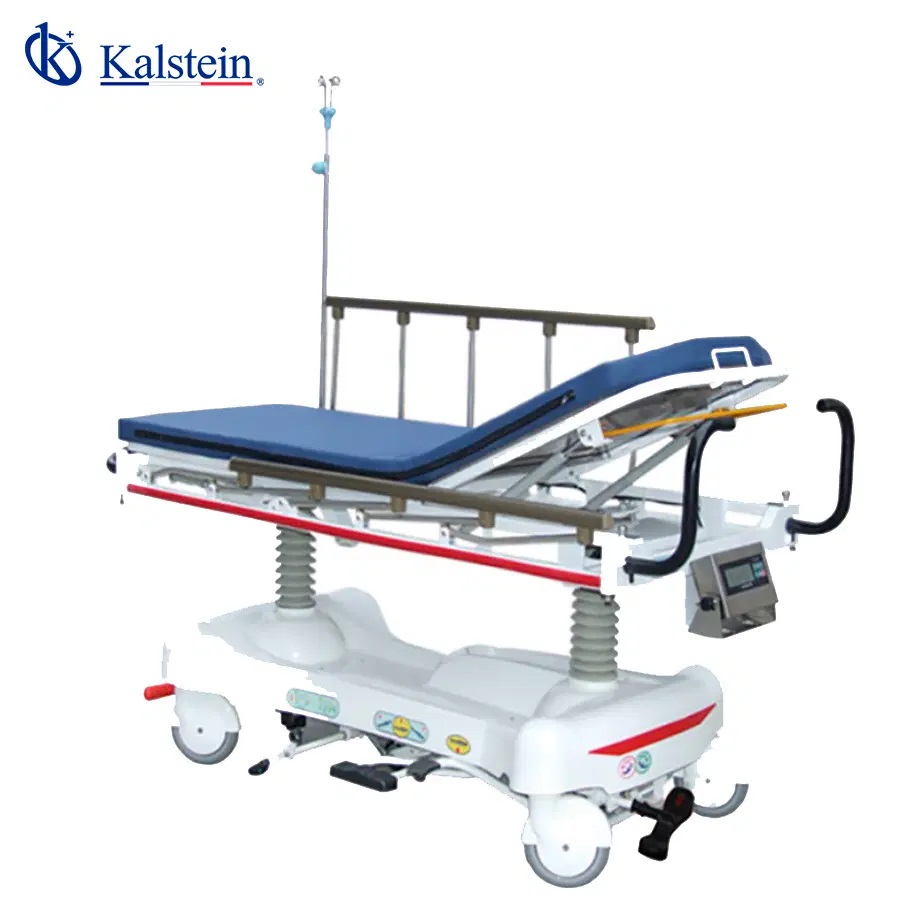Patient transport is a critical task in any medical setting. Efficiency, comfort, and safety are essential to ensure that patients reach their destination in the best possible condition.
In this article, we will explore how to use medical transport stretchers to achieve the best results, providing practical advice, step-by-step tutorials, and highlighting the latest trends in medical technology and recent advances in medical research.
We understand that you need equipment that delivers maximum value to your laboratory. We invite you to visit https://kalstein.co.in/category-product/medical-line/medical-transfer-stretcher/, to immerse yourself in our universe of cutting-edge technology equipment. Our prices are competitive and accessible, we combine the convenience of online shopping with the guarantee of an exceptional product. Because you deserve the best, we create and offer top-tier laboratory equipment. Make your choice today, where science comes to life. https://kalstein.co.in/
The Importance of Choosing the Right Transport Stretcher
Choosing the right stretcher is the first step to ensuring successful patient transport. There are different types of stretchers, from basic to technologically advanced ones.
First, identify the specific needs of the clinical setting and the patient. For example, if it is a hospital environment with frequent internal transports, a stretcher with hydraulic adjustments and omnidirectional wheels may be ideal. On the other hand, for ambulance transfers, a stretcher with immobilization features and advanced support may be more suitable.
Moreover, it is crucial to consider the weight capacity and dimensions of the stretcher. Ensuring that the stretcher can comfortably accommodate the patient without compromising safety is fundamental for efficient and safe transport.
Preparing the Stretcher for Transport
Once the appropriate stretcher is selected, it is vital to prepare it correctly before use. This includes checking all moving parts and safety systems.
Before placing the patient on the stretcher, ensure that the wheels are in good condition and that the brakes work properly. Adjust the height of the stretcher to match the height of the patient’s bed, facilitating an effortless transfer. Also, make sure that all safety belts and restraint systems are in perfect condition and ready to use.
It is recommended to perform a thorough cleaning and disinfection of the stretcher before each use to prevent any risk of infection. Use appropriate disinfectant products and follow the cleaning protocols established by health authorities.
Safe Patient Transfer Techniques
Transferring the patient to the stretcher is a delicate process that requires precision and care to avoid injuries to both the patient and healthcare staff.
Before beginning the transfer, inform the patient about the process and ensure that they feel comfortable and secure. Use proper lifting techniques, such as using sliding sheets or transfer boards, to move the patient from the bed to the stretcher without making abrupt movements. Always ask for help from another staff member if necessary.
Once the patient is on the stretcher, adjust the safety belts and side rails to prevent any accidental falls during transport. Make sure the patient is in a comfortable and secure position before starting the transportation.
Handling the Stretcher During Transport
Proper handling of the stretcher during transport is crucial to ensure the comfort and safety of the patient. Here are some recommended practices.
Always push the stretcher from the head end, making sure to maintain an upright posture to avoid back injuries. Use smooth and controlled movements, avoiding sudden turns and rapid movements. In case of obstacles such as curbs or door thresholds, slightly tilt the stretcher back and push carefully.
When transporting in elevators, ensure that the cabin is properly aligned with the floor and that the doors are fully open before entering. In case of transporting up or down stairs, use ramps and ask for assistance from other staff members to ensure a safe ascent or descent.
Using Stretchers in Emergency Situations
In emergency situations, efficient and rapid use of the stretcher can make a significant difference in patient care. Preparation and training are key.
Ensure that all staff members are trained in using stretchers in emergency situations. This includes familiarization with quick adjustment systems and patient immobilization mechanisms. In emergencies, every second counts, so it is vital that staff can operate the stretcher efficiently and quickly.
Always keep the stretcher in an accessible location and ready for immediate use. Regularly check the condition of the stretcher components, especially the restraint systems and wheels, to ensure functionality at all times.
Maintenance and Care of Transport Stretchers
Regular maintenance of stretchers is essential to ensure their longevity and optimal functioning. Here are some practical tips.
Conduct periodic inspections to identify any wear or damage to the stretcher structure. Pay special attention to the wheels, brakes, and adjustment systems. Lubricate the moving parts according to the manufacturer’s recommendations to ensure smooth and effortless movement.
Clean and disinfect the stretcher after each use, using appropriate products and following cleaning protocols. This not only prevents infections but also keeps the stretcher in good condition.
Finally, schedule an annual professional maintenance for a complete and detailed review. This includes checking all safety systems and replacing any defective components.
By following these steps and recommendations, you can ensure that the use of medical transport stretchers is efficient, safe, and comfortable for patients. Proper selection, preparation, handling, and maintenance of stretchers are essential for providing quality medical care. Additionally, staying updated with the latest trends in medical technology and recent advances in medical research will allow you to always offer the best support in patient transport.


